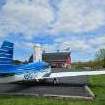Annual Maybes - To do or not to do?
-
Members Online
- 201Mooniac
- Marc_B
- Kelpro999
- Igor_U
- ripmeb
- gwav8or
- slowflyin
- DXB
- Wingfree
- BlueSky247
- camshaft
- bennd56
- Ragsf15e
- CCAS
- Yetti
- ArtVandelay
- MikeOH
- eman1200
- 1980Mooney
- Shadrach
- LBM
- DCarlton
- phrogpilot73
- StevenL757
- Mellow_Mooney
- NickG
- Gongse
- Geoff
- TheAv8r
- Sean
- KSMooniac
- ta2too
- Speed Merchant
- richardbrochu27
- Parker_Woodruff
- Bob R.
- midlifeflyer


Recommended Posts
Join the conversation
You can post now and register later. If you have an account, sign in now to post with your account.